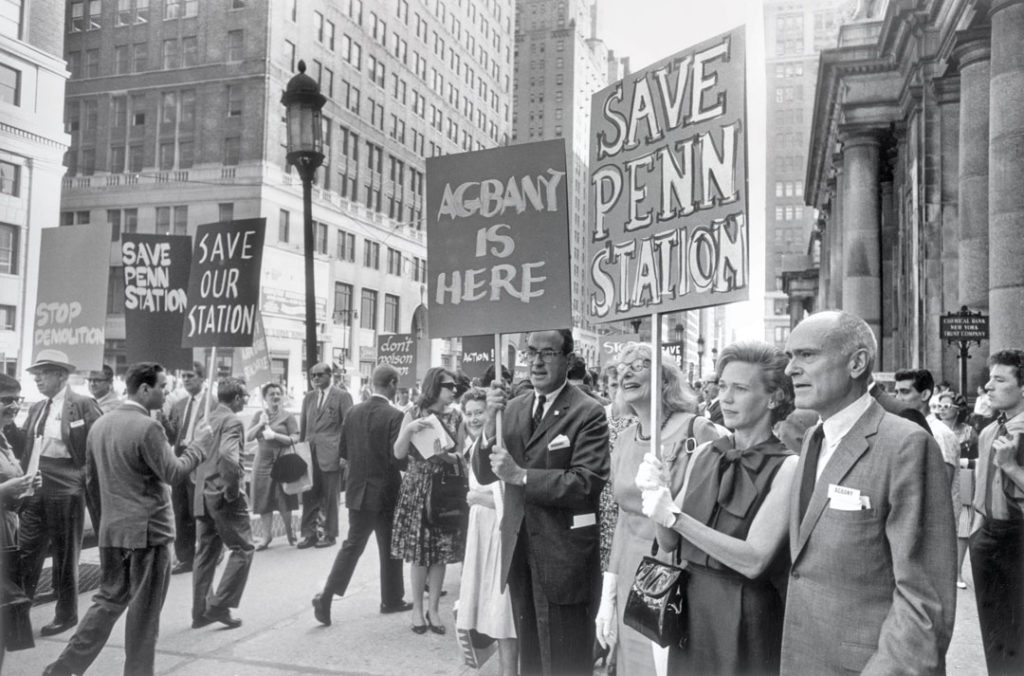Governor Hochul’s misguided plan for Penn Station has hit a “speedbump.” After criticism from the State Comptroller over the lack of financial details, the plan was not presented to the State Public Authorities Control Board for its approval.

Critics say this is a chance to push for a real transit plan and a station design worthy of New York. We agree. But this is also the time to discard the fundamental flaw in the plan—resurrecting urban renewal to eliminate homes, local businesses, and landmark quality buildings on blocks of Midtown Manhattan.
Jane Jacobs described urban renewal best in her book, “The Death and Life of Great American Cities.” “This is not the rebuilding of cities. This is the sacking of cities,” she wrote. Jacobs argued for “mixed-use” urban design with different building types and uses. She rejected “the dishonest mask of pretend order.”
The State Environmental Impact Statement calls the area “blighted” and objects to the “various architectural styles and building sizes.” It looks forward to the “order” of giant buildings.
It can’t be emphasized enough that the Governor’s plan is a mega real estate deal. It has little to do with improving transit or improving Penn Station. The State would override the City’s zoning and land use process to allow a developer to build 10 giant, mainly commercial, towers larger than Hudson Yards. Because of the lack of financial data, the City’s Independent Budget Office and the State Comptroller cannot fully analyze the plan. But it’s clear that only a small percentage of whatever revenue the towers would provide would actually go to any Station improvement. As one critic asked, Is this the City we want to live in?
With few exceptions, the Mayor and other City representatives agreed to surrender the City’s right to determine how we grow and change. The City has gotten little from Albany in return.
We all want a splendid Penn Station. If the State tackled that first, through the normal bonding process, and with likely federal help, the land around the Station would increase in value. That would automatically incentivize some new development. The City’s land use process would give the public a chance to weigh in. During work on the Station, the City’s Landmark Preservation Commission should be free to designate appropriate buildings.

August 2 marked the 60th anniversary of citizens protesting to save the original Penn Station from demolition. One of the signs they carried said “Don’t Sell Our City.” I suggested to an opponent of the Governor’s plan that we could use that sign again. “They aren’t selling the City, this time,” he said. “They are giving it away.”
Peg Breen, President
The New York Landmarks Conservancy
